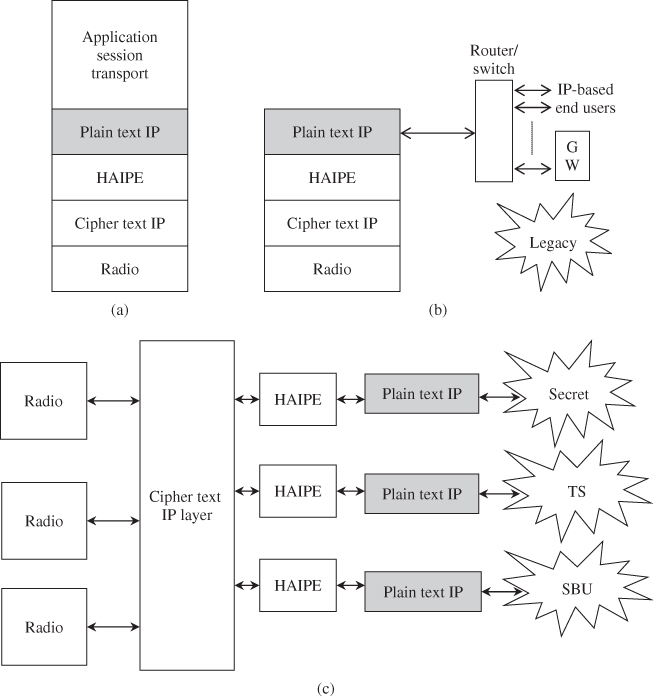9.1 The Plain Text IP Layer and the Tactical Edge
It is important to emphasize the definition of the plain text IP layer as it relates to the tactical edge. The goal of defining the tactical edge is to obtain the open architecture presented in Figure 8.2, regardless of the protocol stack position within a node or platform. There are three cases where the plain text IP layer can exist.
The first case is a simple architecture, such as that used to deploy a soldier's communications device.1 Here we can have a single application built on top of the plain text IP layer. The soldier's communications device is composed of the radio (MAC, DLL, and physical layers), the cipher text IP layer, the HAIPE layer, the plain text IP layer, and the upper layers (transport, session, and application). This architecture is demonstrated in Figure 9.2a. Although all these layers are integrated in a single device, an open architecture would allow for the integration of this device, at a low cost and for the creation of peer-to-peer communication with other nodes, within or external to this soldier's radio subnet, as explained in Chapter 8.
Figure 9.2 Three different possibilities for having an open architecture based plain text IP layer. (a) Single application device, (b) single radio vehicle or platform, and (c) multiple radio platform.

The second case is for the communications architecture of a vehicle ...
Get Tactical Wireless Communications and Networks: Design Concepts and Challenges now with the O’Reilly learning platform.
O’Reilly members experience books, live events, courses curated by job role, and more from O’Reilly and nearly 200 top publishers.

